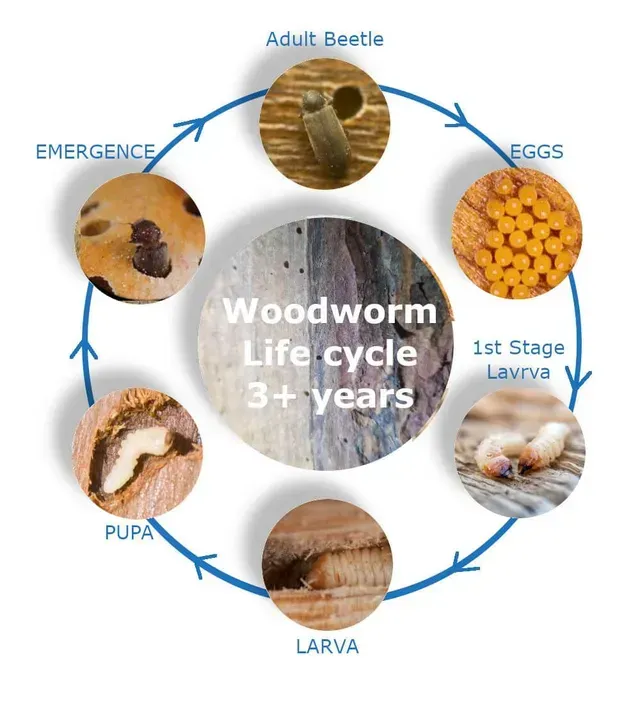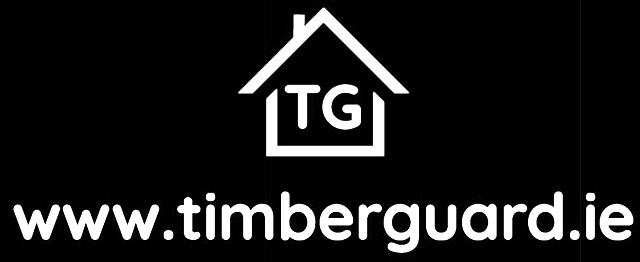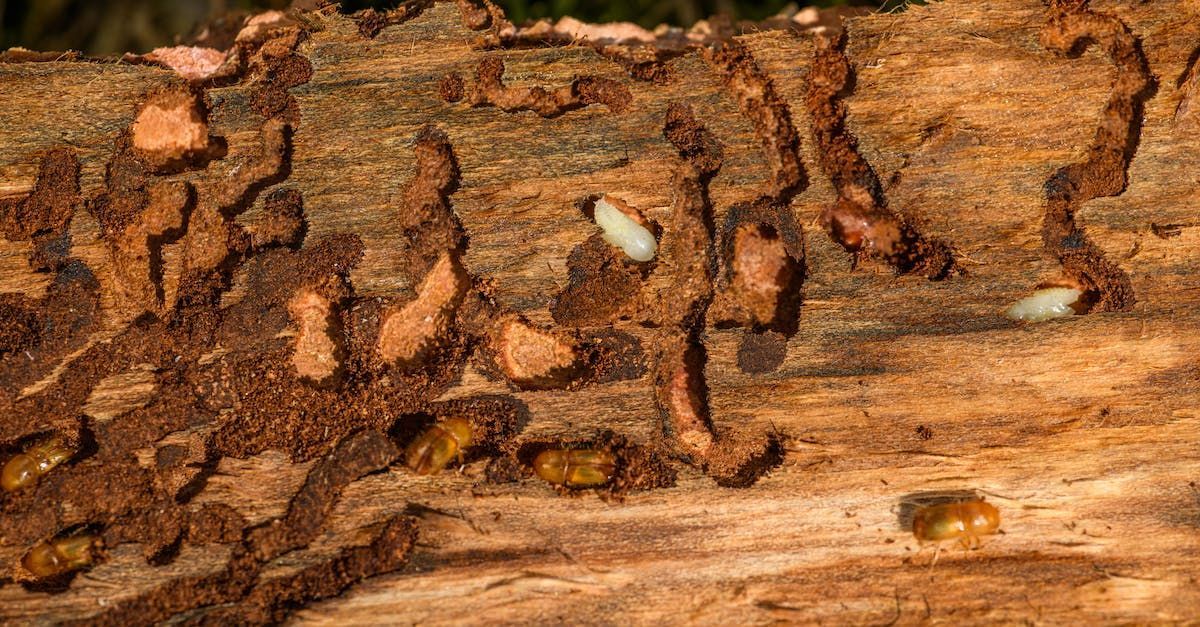What is Woodworm?
Woodworm is a term commonly used to describe a group of wood-boring insects in their larval stage. These insects can cause significant damage to timber, as their larvae tunnel through the wood, leaving a network of small, round exit holes. The most common wood-boring insects in Ireland include the Common Furniture Beetle (Anobium punctatum) and the Deathwatch Beetle (Xestobium rufovillosum). Woodworm infestations can weaken the structural integrity of wooden components in your home if left untreated.

Woodworm Life Cycle
Understanding the woodworm life cycle is essential in effectively combating this pest. The life cycle typically consists of four stages:
- Egg: Adult wood-boring insects lay their eggs in cracks or crevices in the wood, and these eggs hatch into larvae.
- Larva: The larval stage is the most destructive, as these small, white, grub-like larvae bore into the wood to feed and grow. This is the stage responsible for the damage to your timber.
- Pupa: Once the larvae have grown, they create a pupal chamber within the wood, where they undergo a transformation into adult insects.
- Adult: Adult wood-boring insects eventually emerge from the pupal chamber, leaving exit holes in the wood. They then seek mates and continue the life cycle by laying eggs in other wooden structures.
It's important to note that woodworm infestations often go unnoticed for some time, as the larvae remain hidden within the wood. Identifying and addressing the issue as early as possible is crucial to preventing significant damage to your wooden structures. Our professional woodworm treatment not only targets the existing infestation but also disrupts the life cycle, providing long-term protection for your home.
How Can I Tell That My House Has a Woodworm Problem?
Identifying a woodworm infestation can be tricky, as the damage often occurs internally. Here are some signs to watch for:
- Small Exit Holes: Look for tiny, round holes (1-2mm) on the surface of wooden structures. These are exit holes where adult wood-boring insects emerge.
- Frass (Wood Dust): You might notice powdery wood dust near the exit holes or on the floor beneath infested timbers.
- Weakened Wood: Infested wood may become weakened, with a crumbly or damaged appearance. This is especially evident in structural timbers like beams or floorboards.
- Adult Insects: In some cases, you may spot adult wood-boring insects around your home, typically emerging during the summer months.
How Did They Get In?
Woodworms enter your home through wooden items or structures that were already infested when installed. Infested timber often comes from older buildings, reclaimed wood, or wooden items purchased secondhand. Once inside, the larvae can tunnel through the wood, causing damage over time.
Can I Treat This Problem Myself?
DIY treatments may not fully eliminate the woodworm infestation, and they can pose risks to your health and the environment. Our experienced professionals have the knowledge and tools needed to assess, treat, and prevent wood boring beetle problems effectively, ensuring the long-term protection of your home.






